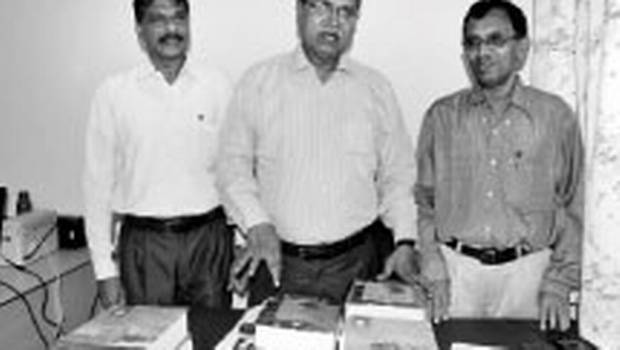
Mangalore :
A team of erudite scholars, at the behest of Deputy Commissioner A B Ibrahim, began work on a gigantic project chronicling 2,000 years of Mangalore’s history.
The 1,000-page ‘Mangalore Darshana,’ to be published in two volumes, will highlight plurality of Mangalore, Chief Editor of Mangalore Darshana, Prof B A Viveka Rai said.
The book begins from Christian era where Roman geographer Claudius Ptolemy mentions the Netravathy river. Govinda Pai in one of his works also quotes Ptolemy, said Rai.
From Alupa dynasty, the first kings who ruled Mangalore from sixth century to 14th century, the narration will cover arrival of Portuguese in 1526, rise of Hyder Ali and beginning of British rule in Mangalore from 1799 onwards.
Information available in travelogues of Abdul Razak (a Persian ambassador who visited Mangalore in 1132 AD), Scottish doctor Francis Buccaneer (who visited Mangalore in 1801), is being utilised to liven up the account.
Rai said a sea trader Abraham Ben Yaju’s account of his stay in Mangalore, including being married to a local woman Ashur, his metal industry, lifestyle from 1132 to 1149 which was in old Arabic was translated to English two years ago.
People from different parts of world, including Jews, came and settled in Mangalore. Before Islam became an institution country wide, many in Mangalore were converted to Islam, he said.
Archives on Mangalore
Besides history, geography, geology, epigraphy, socio-cultural development in the region, the unique influence of natha cult, transport, media, industries, administration, heritage buildings, sports, visit of Gandhiji, Tagore, hotels and more will be included in Darshana, associate editors Vaman Nandavar and Muddu Moodbelle said.
On their approach, Rai said discussions were still in formative stages. “The framework, strategies keep changing, but we have a vision and know what needs to be done,” he said.
Chronicling history is nothing new to Prof Rai. While serving as the Vice-Chancellor of Kannada University, he chronicled 50 years of the state’s history.
As the V-C of Karnataka State Open University (KSOU), he initiated work on chronicling history of Mysore and his successor published Mysore Darshana in four volumes.
It was his work in Mysore Darshana that was noticed by Ibrahim.
“The DC asked us to complete Mangalore Darshana within a year and most importantly spared us a headache of maintaining accounts,” he said.
Unlike anything before they had done, Mangalore Darshana project is challenging, admits Rai.
Unlike Mysore Palace, Mangalore has had no culture of maintaining archives.
A previous compilation of Mangalore’s history, ‘Sturrock Manual,’ borrowed for a doctoral thesis was never returned. “We will have to tap information outside Mangalore and India. For instance we will be at Asiatic Society of India in Kolkata to know about plants,” Rai said.
“I am lucky for the fact that I have good network of scholars who will not turn down my request,” he said.
The work will begin with interview of elderly residents to shed light on life in bygone era. Next experts will contribute 100 articles of 10 pages each about Mangalore.
“We hope that an archive of Mangalore will be a byproduct of this initiative,” Rai said.
It is Payback Time
Mangalore: Prof Viveka Rai, who returned from Germany in October 2013, where he serves as guest professor, Chair of Indology, University of Wurzburg, is presently translating Basava’s vachanas to Tulu. He is bringing out a volume (300 pages) on classical Kannada in English translations with Prof C N Ramachandra. He is also working on another book, translating English grammar to Kannada which will be completed within a week. Despite being pre-occupied with close-academic work, he was still drawn to Mangalore Darshana because he loved the subject. “I have lived in Mangalore since 1968 and the city has given me everything,” he said.
source: http://www.newindianexpress.com / The New Indian Express / Home> States> Karnataka / by Harsha / June 30th, 2014